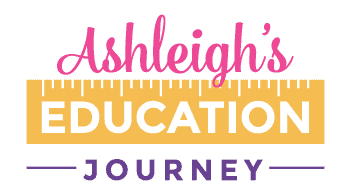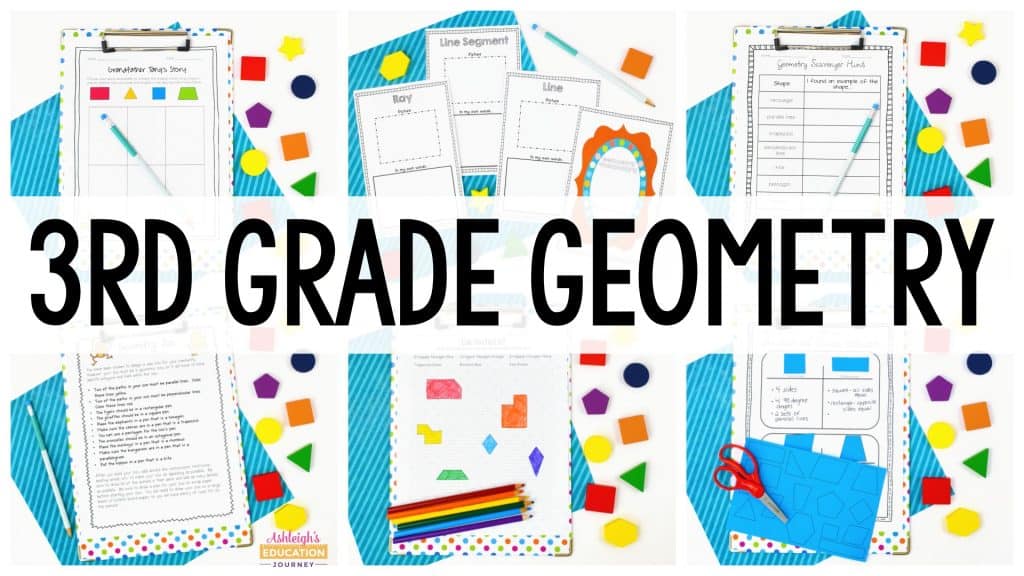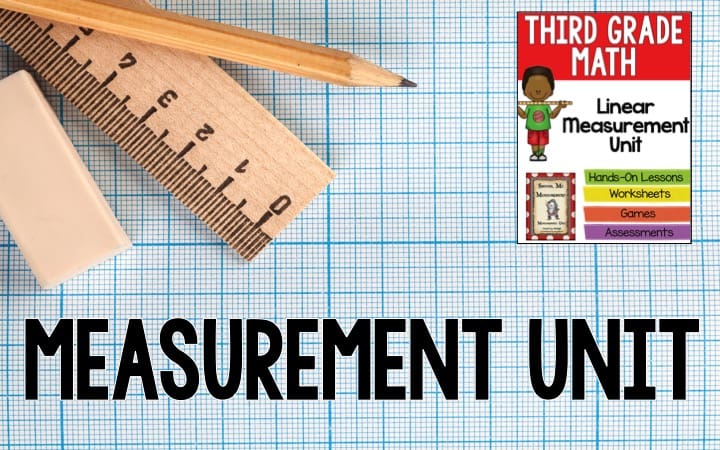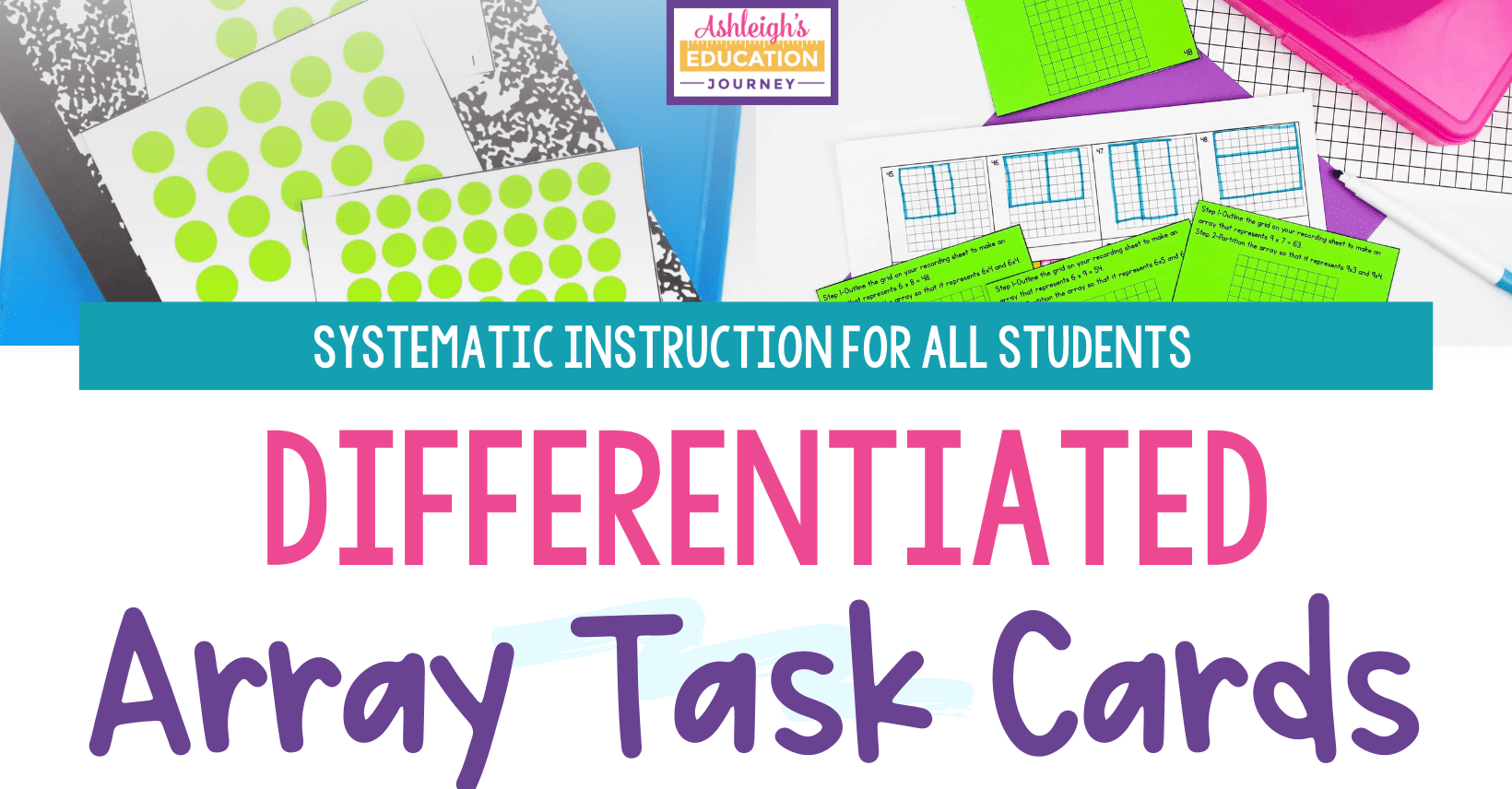
These differentiated array task cards which you can find here are designed for students who need extra support in math. These array tasks cards are scaffolded in order to prepare students for multi-digit multiplication. They begin with the most basic skills (reading arrays) and gradually increase in difficulty. You can use all the array task cards or pick the ones needed for your students.
One of my favorite ways to implement these array task cards is in a small group setting. This allows me to really dig-in and focus on skills that are giving students difficulty. I do not recommend assigning all the cards at one time. Instead, I would use the cards to guide my small group instruction.
Reading Arrays Using Dots
This is the most basic portion of the task cards. Students use the arrays to write multiplication equations. If this is challenging for students, we stay on this or backtrack even further. If it’s easy for students, we move to the next section.
 Array Task Cards on Grids
Array Task Cards on Grids
When I was originally teaching third grade, I didn’t see the importance of teaching arrays on grids. I assumed that dots, stars, or any other element was enough. However, now that I’ve taught fourth grade and have worked extensively with students and area models and arrays with multi-digit multiplication and division, I see the importance. Students need to be very comfortable with arrays in the grid format.
Combining Arrays
It’s a bit hard to see the shading on the array task cards shown below. If you look closely, part of each array is green and part of each array is blue. In this section students write a multiplication equation for the blue array and the green array. This sets the stage for the distributive property in a small, incremental step.
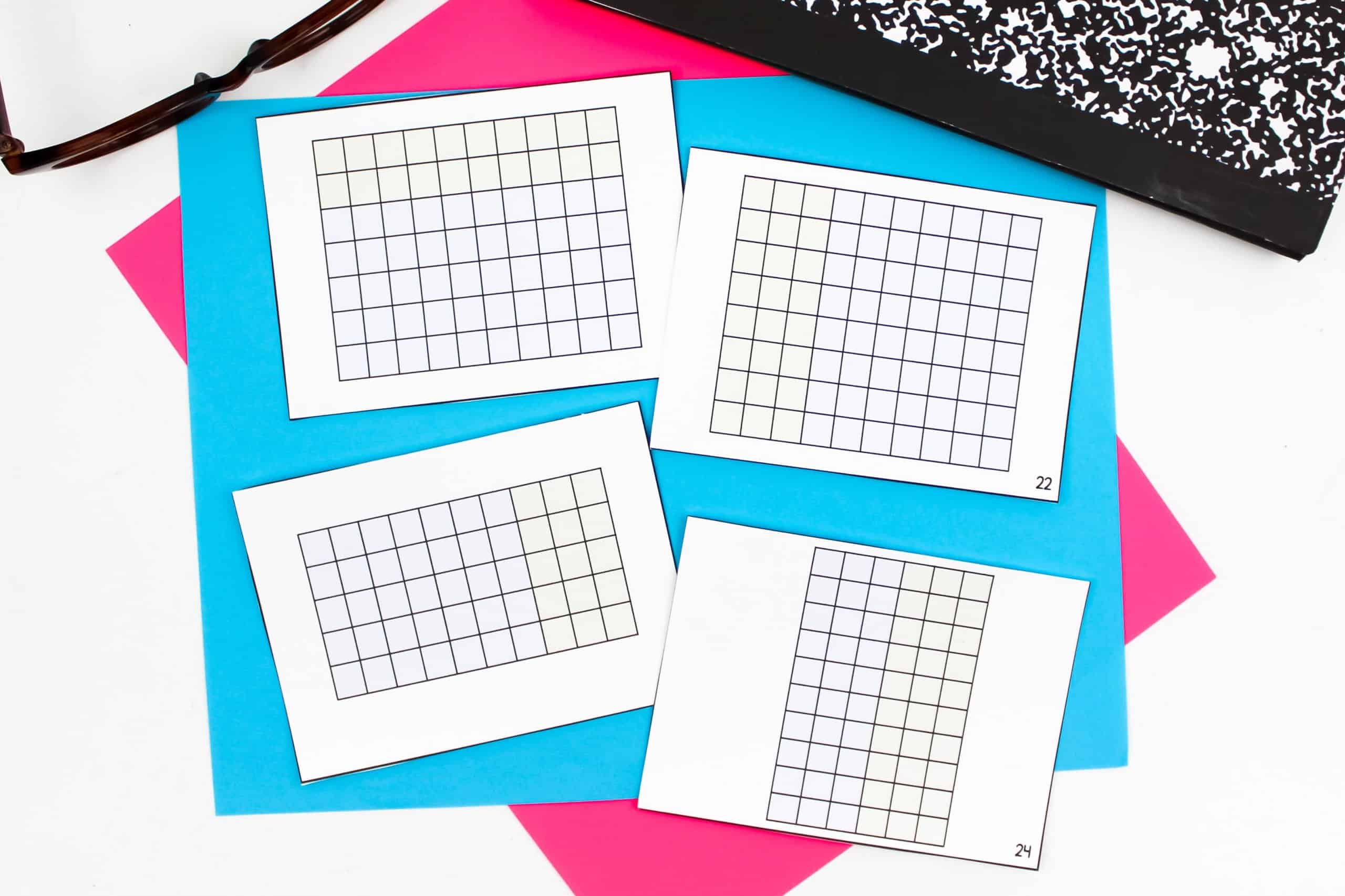
Draw Arrays on Grid Paper
Outlining arrays isn’t always easy for students. Don’t ask me why, but it isn’t! When students reach this portion of the array task cards, they draw arrays on grid paper. This is another small step toward multi-digit multiplication. It’s important because far too frequently I see students unable to draw an array on grid paper. It’s good to address this before multiplying larger numbers.
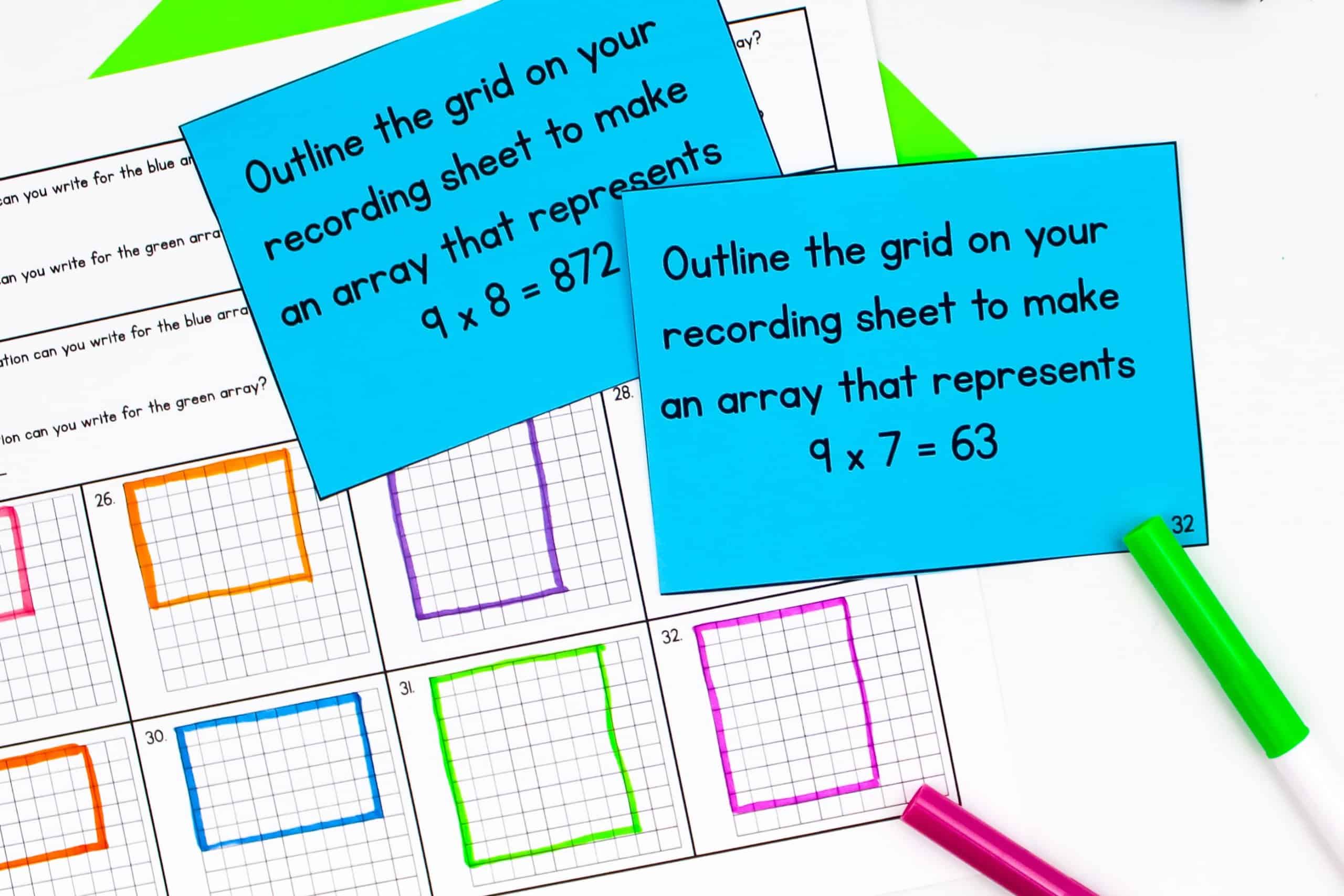
Array Task Cards – Partition Arrays
The next step toward multi-digit multiplication is teaching students how to partition arrays. Eventually, we want students to independently determine how to break apart the array. In this portion of the assignment, students are told the dimensions. Not all students will need this level of guidance, and it’s okay to skip this step! However, you may be surprised at how many students need this practice.
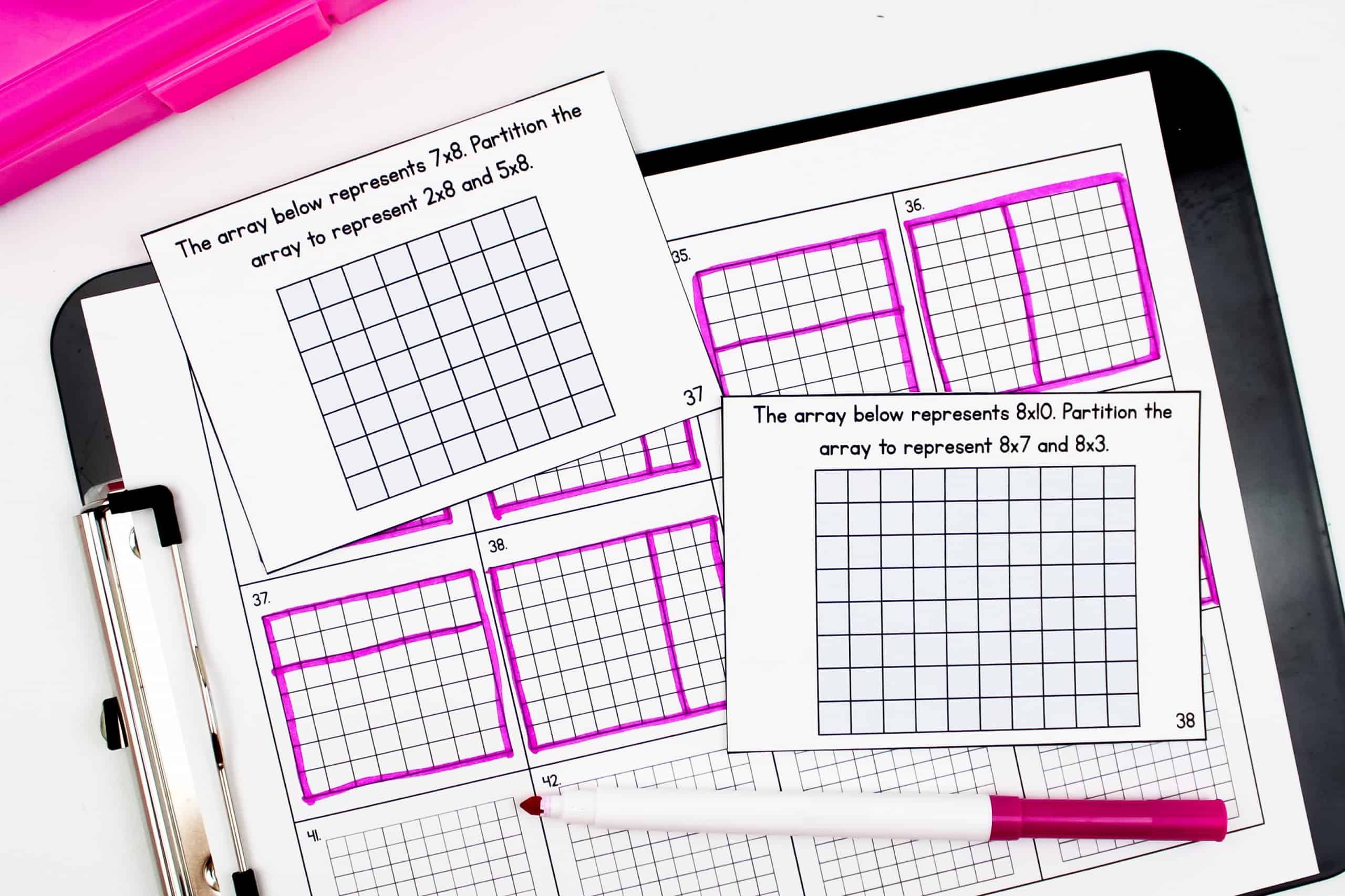
Outline AND Partition Arrays
In the arrays above, the total is already outline for students. For example, when students partition an array to show 8×7 and 8×3, the total of 8×10 is already created for students. In the next step, students must also outline the total array. In the example below, students first draw an array to represent 8×10. Then, they can partition it to show 3×10 and 5×10. You can also see how the recording sheet correlates with the task cards.
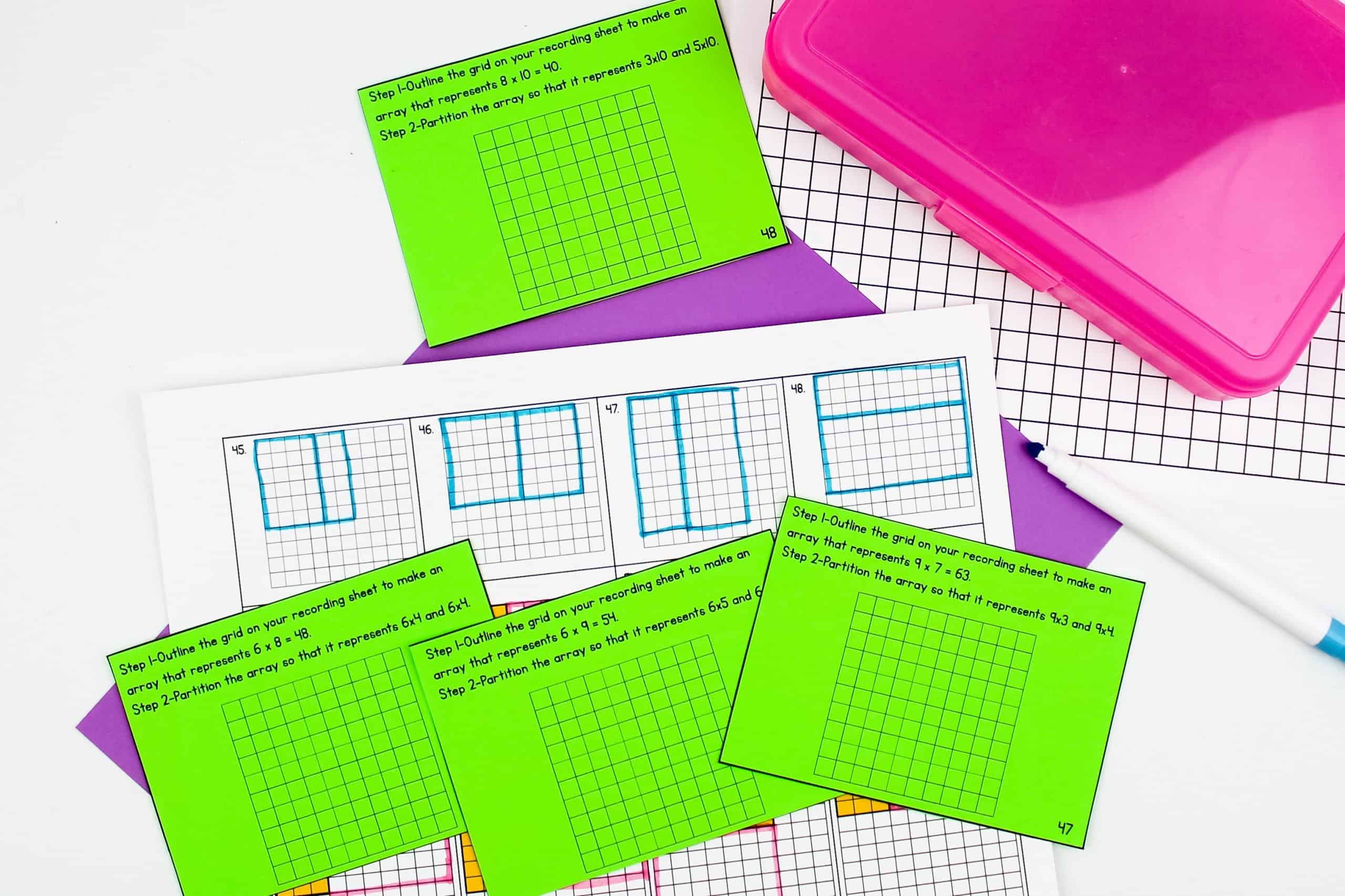
Array Task Cards – Partial Arrays
In the next step, students are given PART of an array and use the total to complete the remaining part. You can see how this is another step toward the distributive property and even partial products.
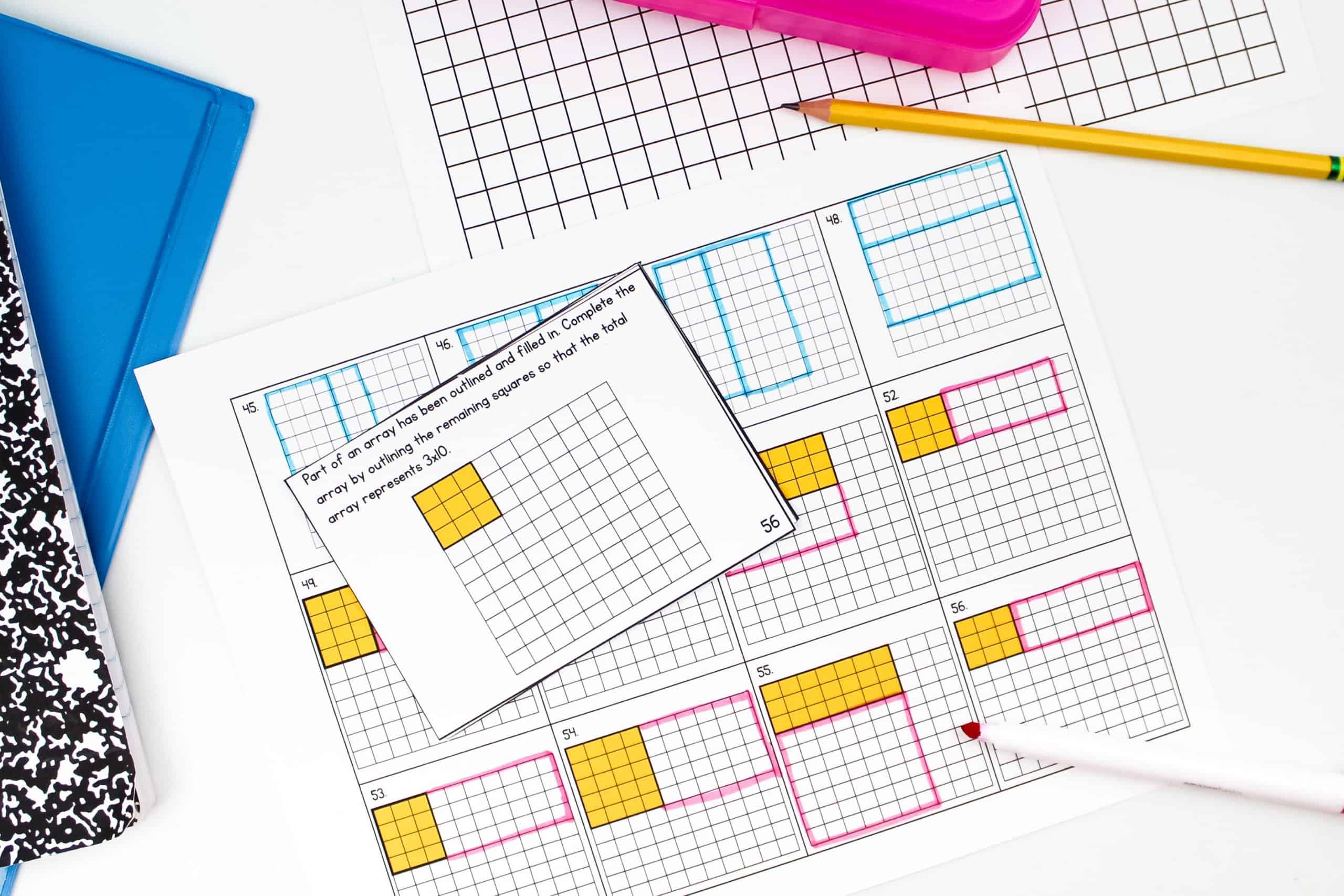 Distributive Property
Distributive Property
Finally! It’s time for the distributive property. In this section, students write a multiplication equation using the distributive property that is represented in the array. In one of the examples below, students would write (3×3) + (5×3). The format of the equation is included on the student recording sheet.
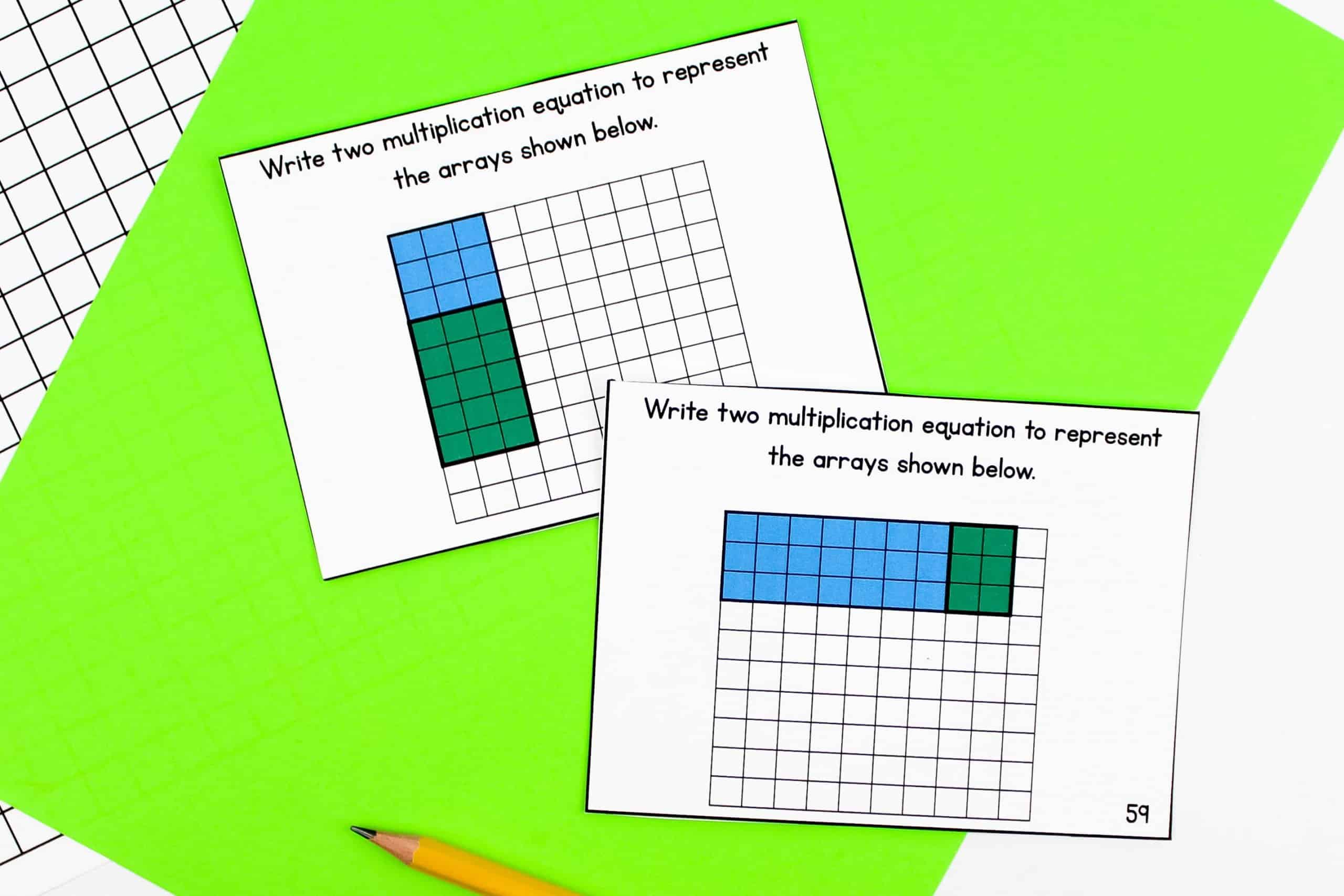 Look How Far We’ve Come
Look How Far We’ve Come
In the final section of the array task cards, students draw and partition an array to represent a multiplication problem using the distributive property. This gives students the opportunity to put it all together. Once students are successful with this level of task, they are ready to begin multi-digit multiplication!
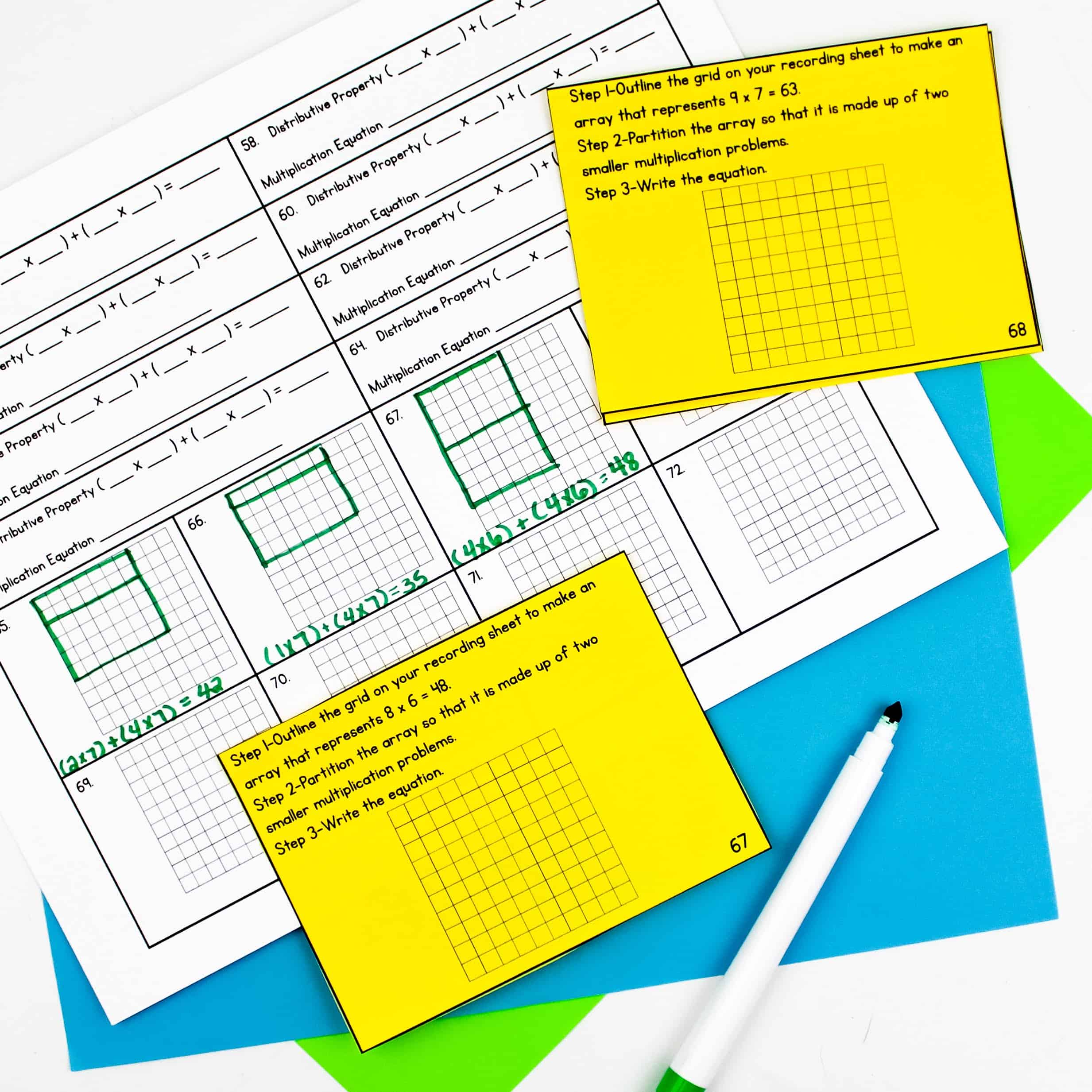
Be sure to check out this post for teaching multi-digit multiplication!
